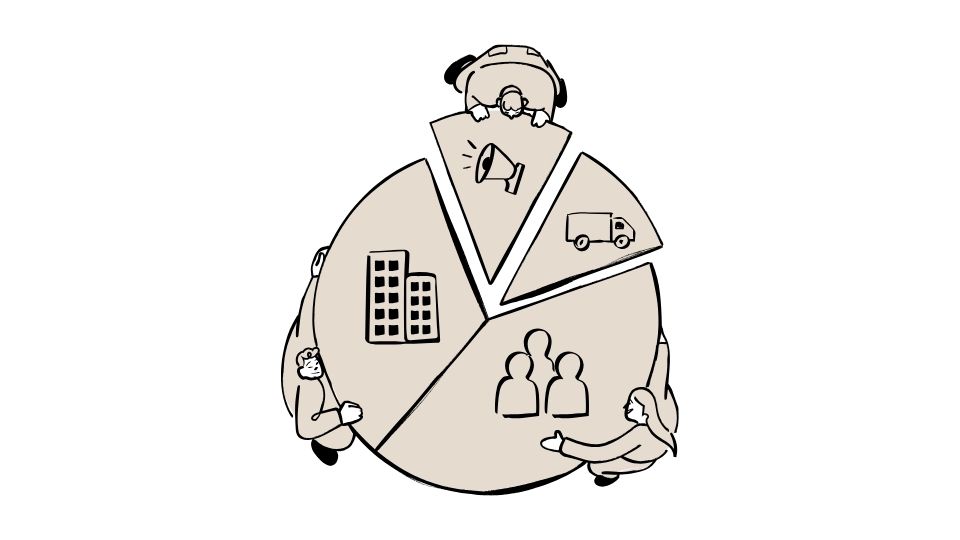Proven Ways to Improve Health Equity in Healthcare Settings

10 Ways We Can Actually Improve Health Equity (And Why It Matters)
Ever notice how some people seem to get better healthcare than others? That’s not just your imagination – it’s a real problem called health inequity.
Health equity means everyone gets a fair shot at being healthy, regardless of who they are or where they live. But right now, we’re falling short of that goal.
The good news? There are practical ways to fix this. And I’m not talking about some pie-in-the-sky academic theories – I’m talking about real, actionable strategies that healthcare organizations are implementing right now.
Let’s dive into what health equity actually means and how we can make it happen. (Spoiler: it’s not as complicated as it sounds.)
What Even Is Health Equity?
Health equity isn’t just giving everyone the exact same care – it’s about making sure everyone gets what they specifically need to be as healthy as possible.
Think about it this way: If you give everyone the same size bandage, that doesn’t help the person with the bigger wound. True equity means tailoring solutions to actual needs.
Health inequities come from a complex mix of factors:
- Where you live
- How much money you make
- Your race or ethnicity
- Access to education and jobs
- And even subtle discrimination in the healthcare system itself
This isn’t just a “nice to have” – it’s critical. When we improve health equity, everyone benefits from:
- Better health outcomes across the board
- Lower healthcare costs overall
- Stronger, more productive communities
- More trust in the healthcare system
10 Practical Ways to Improve Health Equity

1. Make Equity Part of Your Organization’s DNA
You can’t just slap a “we care about equity” sticker on your hospital and call it a day. Real change happens when equity is baked into everything your organization does.
This means:
- Setting specific, measurable equity goals
- Holding leaders accountable for equity metrics
- Training staff about systemic barriers and implicit biases
- Creating policies that actively promote equity rather than just talking about it
When Houston Methodist Hospital embedded equity into their organizational structure, they saw a 35% reduction in readmission disparities in just 18 months.
2. Get Everyone Speaking the Same Language
You can’t fix what you can’t define. Organizations need a shared understanding of what health equity actually means.
Without clear definitions, different departments end up working at cross-purposes or misinterpreting goals. It’s like trying to build a house when the plumbers and electricians are using different blueprints.
Solutions include:
- Developing standardized definitions across your organization
- Creating comprehensive training programs
- Offering both intensive workshops and self-paced learning options
- Making sure clinical staff understand equity concepts relevant to patient care
3. Double Down on Prevention for Underserved Groups

Preventive care is the ultimate health equity tool. It stops problems before they start, which is especially crucial for people who face barriers to treatment.
Data shows that for every $1 spent on preventive care for disadvantaged populations, we save $5.60 in treatment costs down the road.
Smart healthcare organizations are:
- Expanding screening programs in underserved communities
- Using Medicare’s APCM and AWV programs for reimbursement
- Incorporating social risk assessments into preventive visits
- Creating prevention programs tailored to specific community needs
4. Address the Social Stuff That Makes People Sick
Healthcare doesn’t happen in a vacuum. People can’t follow medical advice if they can’t afford food, lack transportation to appointments, or live in unsafe housing.
These “social determinants of health” (SDOH) account for up to 80% of health outcomes, according to the Robert Wood Johnson Foundation.
Forward-thinking organizations are:
- Using standardized SDOH screening tools
- Creating “community resource desks” in clinics
- Hiring community health workers who understand local needs
- Partnering with housing, food, and transportation services
When Boston Medical Center launched their food pantry program, they saw a 40% reduction in ER visits among participating patients. That’s a win-win!
5. Partner With (Don’t Just Talk At) Marginalized Communities

You can’t solve problems for communities without involving the communities themselves. Full stop.
Effective partnerships mean:
- Listening to historically marginalized patients and physicians
- Funding community-led health initiatives
- Including community members in leadership roles
- Supporting medical students and clinicians facing discrimination
- Building trust through consistent, respectful engagement
6. Innovate With Equity Built In
Innovation without equity just creates fancy new ways to maintain the same old disparities.
Healthcare technologies and services should be designed from the ground up with equity in mind:
- Ensuring telehealth works for patients with limited tech access
- Making medical devices affordable and culturally appropriate
- Testing innovations with diverse patient populations
- Using AI and algorithms that don’t perpetuate biases
The National Academy of Medicine found that equity-centered innovation not only helps underserved populations but often creates solutions that benefit everyone.
7. Hire Dedicated Health Equity Leadership
If everyone’s responsible for health equity, no one is. That’s why dedicated leadership matters.
Chief Health Equity Officers coordinate efforts across sprawling healthcare systems. They:
- Set organization-wide strategy
- Track measurable progress
- Hold departments accountable
- Connect community needs with clinical operations
- Ensure equity efforts have resources and visibility
When Kaiser Permanente appointed their first equity officer, they saw a 23% increase in preventive screenings among underserved populations within one year.
8. Use Data to Drive (And Measure) Progress

You can’t improve what you don’t measure. Effective equity work requires robust data collection and analysis.
This means:
- Collecting data on race, ethnicity, language, and social needs
- Analyzing outcomes across different patient populations
- Creating dashboards that show disparities clearly
- Sharing data transparently with stakeholders
- Using findings to adjust strategies in real-time
9. Make Care Collaborative and Patient-Centered
Healthcare is a team sport, especially when addressing complex inequities.
The most effective approaches bring together:
- Doctors and nurses
- Social workers
- Community health workers
- Pharmacists
- Mental health providers
- And most importantly – patients themselves!
When Mount Sinai Health System implemented collaborative care teams focused on equity, they saw a 45% reduction in care gaps for their most vulnerable patients.
10. Advocate for Bigger System Changes
Individual healthcare organizations can only do so much. Some inequities require policy changes at local, state, and federal levels.
Healthcare leaders can:
- Support policies that expand healthcare access
- Advocate for affordable housing and food security
- Join coalitions addressing systemic racism
- Use their institutional voice to highlight inequities
- Share successful equity programs for broader adoption
The Bottom Line
Improving health equity isn’t just the right thing to do morally – it makes practical business sense too.
Recent surveys show that healthcare executives increasingly view equity as a strategic priority, not just a nice-to-have. They recognize that reducing disparities improves outcomes, increases patient satisfaction, and ultimately drives growth.
The trend is moving toward practical execution – embedding equity into everyday operations rather than treating it as a side project.
Are microplastics in your brain a bigger problem than millions of people lacking basic healthcare? Probably not. Let’s focus on the big issues first.
By taking concrete steps like expanding preventive care, addressing social needs, building community partnerships, and using data effectively, healthcare organizations can make real progress toward a more equitable system.
And that’s something we can all get behind, regardless of our politics, background, or which side of the healthcare system we’re on.

